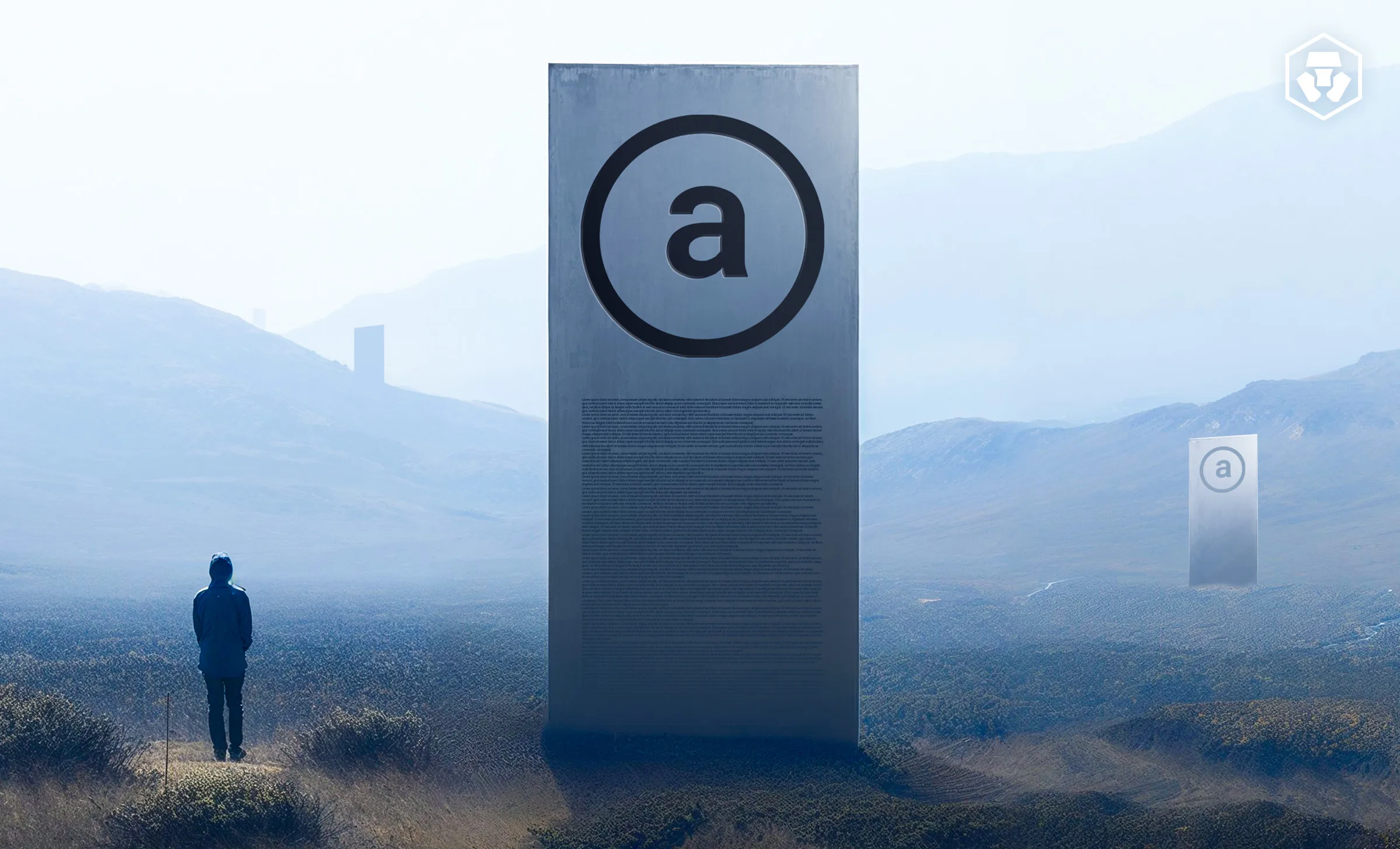Arweave Unveils Major Upgrade with Launch of Next-Gen Decentralized Platform
10.02.2025 12:00 1 min. read Kosta Gushterov
Arweave has officially launched the mainnet for its new computing platform, AO, marking a key milestone after a year-long testnet phase.
With the mainnet now live, the platform’s native AO tokens can be transferred, and its decentralized computing capabilities are set to expand.
AO is designed as a “hyperparallel computer,” enabling distributed, parallel processing for various applications. By utilizing Arweave’s persistent data storage, AO ensures that data remains immutable and accessible, which is essential for its on-chain computations. This approach leverages Arweave’s decentralized infrastructure to scale AO’s shared ledger, ensuring the long-term stability and integrity of its computations.
The launch of AO is not only significant for decentralized computing but is also expected to drive increased demand for Arweave’s storage solutions. The platform will facilitate next-generation decentralized applications (dApps), including autonomous AI agents. The launch also introduces the AO token, which has a fixed supply of 21 million, following the same scarcity model as Bitcoin.
In line with its fair distribution model, the project will allocate 36% of the AO tokens to AR token holders, with the remaining 64% reserved for economic incentives and user growth, such as rewards for bridging assets to the platform or depositing tokens like DAI and stETH into the AO ecosystem.
-
1
German State-Owned Development Bank Issues €100 Million Blockchain Bond
11.07.2025 7:00 2 min. read -
2
Tether Ends Support for Five Blockchains in Infrastructure Shift
12.07.2025 11:30 2 min. read -
3
Cardano and Ethereum Lead in Developer Activity as GitHub Commits Surge
14.07.2025 12:00 1 min. read -
4
BNB Chain Upgrades and Token Delistings Reshape Binance Ecosystem
16.07.2025 22:00 2 min. read -
5
Ripple Powers UAE’s First Tokenized Real Estate Project via XRPL
16.07.2025 21:00 2 min. read
Chainlink Partners With Westpac and Imperium to Tokenize Finance in Australia
Chainlink has announced a major institutional partnership with Westpac Institutional Bank and Imperium Markets as part of Project Acacia—a joint initiative involving the Reserve Bank of Australia and the Digital Finance Cooperative Research Centre (DFCRC).
BNB Chain Upgrades and Token Delistings Reshape Binance Ecosystem
Binance continues to refine its ecosystem in 2025, with major updates spanning performance upgrades, token listings and removals, and new token launches—all reinforcing its focus on scalability and innovation.
Ripple Powers UAE’s First Tokenized Real Estate Project via XRPL
Ripple has taken a major step in expanding its institutional digital asset infrastructure in the Middle East by partnering with Ctrl Alt to support Dubai’s first government-backed real estate tokenization initiative.
Cardano and Ethereum Lead in Developer Activity as GitHub Commits Surge
Recent GitHub data reveals which blockchain ecosystems and individual projects attracted the most developer attention last week—a key signal of long-term project strength.
-
1
German State-Owned Development Bank Issues €100 Million Blockchain Bond
11.07.2025 7:00 2 min. read -
2
Tether Ends Support for Five Blockchains in Infrastructure Shift
12.07.2025 11:30 2 min. read -
3
Cardano and Ethereum Lead in Developer Activity as GitHub Commits Surge
14.07.2025 12:00 1 min. read -
4
BNB Chain Upgrades and Token Delistings Reshape Binance Ecosystem
16.07.2025 22:00 2 min. read -
5
Ripple Powers UAE’s First Tokenized Real Estate Project via XRPL
16.07.2025 21:00 2 min. read


